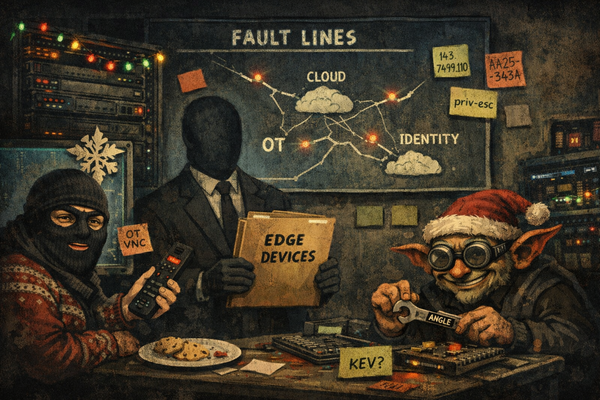Countering the Threat of North Korean IT Workers: Advanced Detection and Response Strategies
This article explores the tactics employed by North Korean IT workers, the risks they pose, and advanced threat detection tools and incident response plans tailored to counter their activities.

Introduction
The increasing sophistication and persistence of North Korean cyber operations pose significant threats to organizations worldwide. North Korean IT workers often masquerade as foreign nationals to gain employment, particularly in Western tech companies. These activities generate substantial revenue for the North Korean regime and can lead to severe security breaches, including intellectual property theft, financial exploitation, and espionage.
This article explores the tactics employed by North Korean IT workers, the risks they pose, and advanced threat detection tools and incident response plans tailored to counter their activities. By understanding these threats and implementing robust security measures, organizations can enhance their cybersecurity posture and mitigate the risks associated with North Korean cyber actors.
Findings
Tactics and Activities of North Korean IT Workers
-
Masquerading as Foreign Nationals: North Korean IT workers often use stolen or fraudulent identities to apply for remote jobs, primarily targeting the U.S. tech sector. They leverage front companies and facilitators to conceal their true identities and nationalities.
-
Engaging in Malicious Activities: These workers are involved in activities such as money laundering, cryptocurrency transactions, and unauthorized access to international financial systems. They may work multiple jobs simultaneously, funneling earnings back to the North Korean regime.
-
Sophisticated Deception Techniques: Common tactics include the use of fake résumés, AI-generated or modified profile pictures, and VoIP phone numbers. They avoid video communications during interviews and use remote administration tools to access corporate systems, maintaining persistent access.
Risks Posed by North Korean IT Workers
-
Elevated Access and Security Risks: By securing employment, these workers gain elevated access to modify code and administer network systems, posing significant security risks. They can introduce malware, create backdoors, or exfiltrate sensitive data.
-
Long-Term Network Access: Their access can facilitate long-term infiltration of victim networks, enabling financial exploitation, intellectual property theft, or espionage.
-
Use of Advanced Tools: They utilize multiple remote administration tools and VPN services to maintain persistent and covert access to corporate devices and networks.
Advanced Threat Detection Tools
To counter the sophisticated tactics of North Korean IT workers, organizations should implement advanced threat detection tools:
-
Endpoint Detection and Response (EDR): Tools like CrowdStrike Falcon and Microsoft Defender for Endpoint use behavioral analysis and machine learning to detect and respond to advanced threats on endpoints.
-
Network Traffic Analysis (NTA): Solutions such as Darktrace and Vectra AI monitor network traffic for anomalies, leveraging artificial intelligence to detect and respond to threats in real-time.
-
Security Information and Event Management (SIEM): Platforms like Splunk and IBM QRadar aggregate and analyze log data from various sources, identifying patterns indicative of cyberattacks and providing comprehensive visibility into network activities.
-
Threat Intelligence Platforms (TIPs): Services like Vertex Synapse and Recorded Future aggregate threat intelligence from multiple sources, offering context and actionable insights into emerging threats and adversary tactics.
Incident Response Plans
Developing robust incident response plans is crucial for mitigating the impact of security incidents:
-
Preparation: Establish incident response policies, conduct regular training and simulations, and develop playbooks for different incident types.
-
Detection and Analysis: Utilize advanced threat detection tools to quickly identify and analyze incidents, understanding their scope and impact.
-
Containment, Eradication, and Recovery: Implement measures to contain threats, remove malicious artifacts, and restore systems to normal operations, including isolating affected systems and restoring data from backups.
-
Post-Incident Activities: Perform thorough post-incident reviews to identify lessons learned, update security policies, and improve future response efforts.
Improving Hiring Processes
Organizations can reduce the risk of inadvertently hiring North Korean IT workers by enhancing their hiring processes:
-
Stringent Background Checks: Implement biometric verification and require notarized proof of identity to confirm applicant identities.
-
Mandatory Video Interviews: Conduct video interviews to ensure applicants' visual appearance matches their online profiles and provided identification.
-
Training HR Departments: Educate HR personnel to spot inconsistencies in résumés, employment histories, and detect signs of fraudulent applications, such as AI-modified profile pictures or the use of VoIP numbers.
-
Geolocation Verification: Verify the geolocation of corporate devices and restrict the use of remote administration tools and VPN services that can obfuscate user locations.
-
Continuous Monitoring and Education: Conduct periodic mandatory spot checks and provide ongoing education on current threats and trends related to North Korean cyber activities.
Breaches and Case Studies
Case Study 1: UNC5267 Operations
Description: Mandiant tracked IT workers operating on behalf of North Korea, posing as non-North Korean nationals to gain employment in the U.S. tech sector. These workers used stolen identities and front companies to secure remote jobs.
Actionable Takeaways:
- Implement stringent background checks and identity verification processes.
- Require video interviews to verify applicant identities.
- Monitor for the use of remote administration tools and VPN services that may indicate attempts to conceal true locations.
Reference: Staying a Step Ahead: Mitigating the DPRK IT Worker Threat
Case Study 2: Facilitator Compromising Identities
Description: An American facilitator working with North Korean IT workers compromised over 60 identities of U.S. persons, impacting more than 300 U.S. companies and generating at least $6.8 million in revenue for the IT workers.
Actionable Takeaways:
- Verify the geolocation of corporate devices and restrict unauthorized remote access tools.
- Conduct periodic spot checks to detect unauthorized activities.
- Enhance monitoring for suspicious activities that may indicate insider threats.
Reference: Staying a Step Ahead: Mitigating the DPRK IT Worker Threat
Case Study 3: Cryptocurrency Theft Campaigns
Description: North Korean actors conducted social engineering campaigns against employees of decentralized finance and cryptocurrency businesses to deploy malware and steal cryptocurrency.
Actionable Takeaways:
- Implement multi-factor authentication and strict access controls.
- Provide regular employee training on phishing and social engineering threats.
- Use endpoint protection tools to detect and block malware.
Reference: North Korea Aggressively Targeting Crypto Industry with Well-Tailored Social Engineering Campaigns
Forecast
Short-Term Forecast (3–6 Months)
-
Increased Detection and Reporting
Organizations will likely see a rise in the detection and reporting of North Korean IT workers as awareness grows and security measures improve. Enhanced background checks, video interview requirements, and the use of advanced threat detection tools will lead to more frequent identification of fraudulent applicants and malicious activities.
-
Emergence of New Malware Strains
North Korean cyber actors are expected to continue developing and deploying new malware strains, enhancing their capabilities in keylogging, system information gathering, and executing arbitrary commands. Organizations should stay vigilant and keep their security tools updated to detect these new threats.
-
Enhanced Use of AI in Threat Detection
The adoption of AI-driven threat detection tools will increase as organizations seek to counter sophisticated cyber tactics. Tools that leverage machine learning and behavioral analysis will become essential in identifying anomalies and responding to threats in real-time.
Long-Term Forecast (12–24 Months)
-
Evolution of North Korean Tactics
North Korean IT workers will likely adapt their tactics to circumvent new security measures, potentially developing more sophisticated identity theft techniques and leveraging emerging technologies. This may include supply chain attacks and exploiting zero-day vulnerabilities.
-
Integration of Advanced Detection and Response
The cybersecurity industry will advance in developing and integrating sophisticated threat detection tools and incident response strategies. Organizations will increasingly adopt AI-driven solutions, and there will be greater collaboration between industry peers and cybersecurity agencies to share threat intelligence and best practices.
-
Strengthening of Incident Response Plans
Incident response plans will be continuously refined and updated to address the evolving threat landscape. This includes more frequent training and simulations, as well as the development of specialized playbooks for emerging threats such as supply chain attacks and advanced persistent threats (APTs).
Follow-Up Research
To further investigate this topic, organizations should consider exploring:
-
Emerging Tactics and Techniques: Stay informed about the latest TTPs used by North Korean cyber actors to anticipate and defend against evolving threats.
-
Effectiveness of AI in Cybersecurity: Research how artificial intelligence and machine learning can enhance threat detection and incident response capabilities, improving the ability to detect anomalies and respond in real-time.
-
Collaboration and Information Sharing: Investigate the benefits of collaboration between organizations and government agencies in improving cybersecurity resilience through shared threat intelligence.
-
Indicators of Compromise (IoCs): Identify specific IoCs associated with North Korean IT workers to enhance detection capabilities.
-
Security of Remote Work Environments: Explore additional measures to secure remote work environments, which are often targeted by North Korean IT workers exploiting vulnerabilities in remote access technologies.
By implementing the strategies and tools outlined in this article, organizations can enhance their defenses against the sophisticated tactics employed by North Korean IT workers. Continuous vigilance, advanced threat detection, and robust incident response planning are essential components of a resilient cybersecurity posture.
References and Citations
- Mandiant - Staying a Step Ahead: Mitigating the DPRK IT Worker Threat
- DNI - North Korean Tactics, Techniques, and Procedures for Revenue Generation
- CISA - North Korea Cyber Threat Overview and Advisories - CISA
- IC3 - North Korea Aggressively Targeting Crypto Industry with Well-Tailored Social Engineering Campaigns
- Unit42 - Threat Assessment: North Korean Threat Groups - Unit 42
- Hacker News - N. Korean Hackers Deploy New KLogEXE and FPSpy Malware in Targeted Attacks
- CISA - CISA - North Korea Cyber Threat Overview and Advisories
- Vertex - Vertex Synapse
- AlphaHunt - Original AlphaHunt Post - Part 1
AlphaHunt
Get questions like this? Does it take a chunks out of your day? Would you rather be working on more interesting intelligence tasks? Would you like help with the research?
This baseline report was thoughtfully researched and took 5 minutes.. It's meant to be a rough draft for you to enhance with the unique insights that make you an invaluable analyst. We just did the grunt work..
Did this help you? Forward it to a friend!
(c) 2024 CSIRT Gadgets, LLC
License - CC BY-SA 4.0



![[DEEP RESEARCH] Zero-Days Are a Distraction: 2025’s Biggest Losses Were Stolen Tokens + OAuth](/content/images/size/w600/2025/12/zz-3.png)

